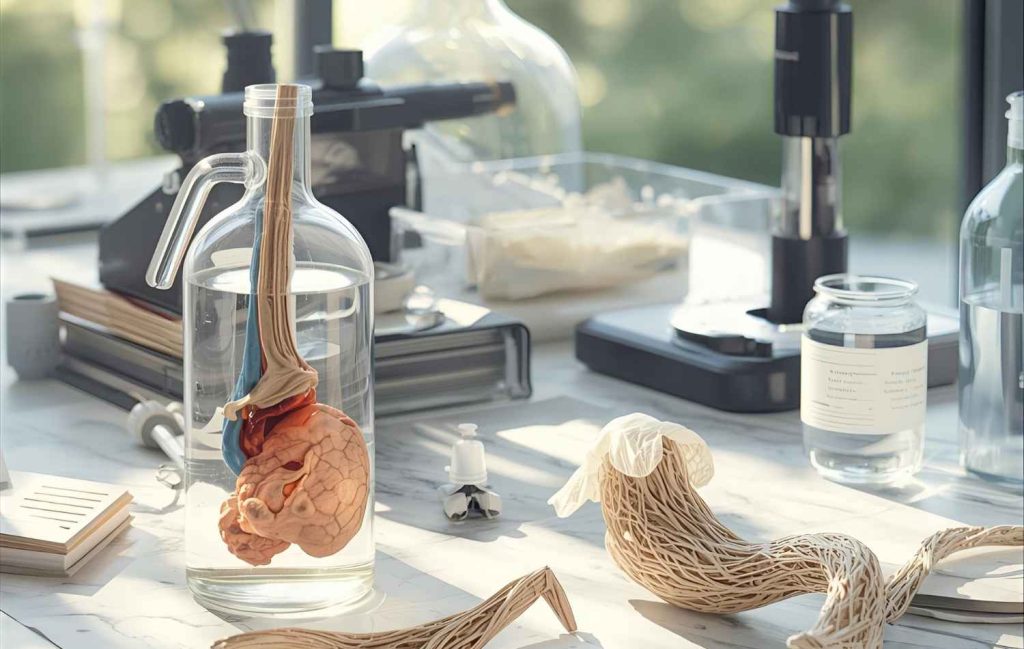In the modern medical world, where advanced technology and breakthrough research advance at dizzying speed, there is a vital need to bridge theoretical knowledge with practical application. This is where Biotech Anatomy enters the picture – a unique company specializing in hands-on cadaver training for medical advancement. The central goal of this field is to provide doctors, researchers, and medical device developers with the practical tools needed to improve care quality and develop medical breakthroughs.
Why is Hands-On Cadaver Training Essential for Medical Advancement?
Hands-on cadaver training has been a cornerstone of medical education since ancient times. However, in the modern era, its role has expanded significantly beyond basic anatomy learning. Studies from Johns Hopkins Medical Institute indicate that doctors who underwent comprehensive hands-on training on real human organs demonstrate 40% higher accuracy levels in performing complex procedures.
The reason is simple yet profound – the human body is a complex and diverse system where each person is unique. Anatomical variations, anomalies, and natural diversity between humans cannot be learned through books or simulations. Only direct experience with real tissues provides the confidence and expertise required for optimal medical care.
How Does Medical Device Training Affect New Technology Development?
One of Biotech Anatomy’s core missions is to support medical technology companies in developing innovative medical devices. The development process is multi-staged and complex, but the most critical step is testing and validation on real human tissues.
Research by the American Medical Device Association shows that devices tested under real conditions achieve an 85% success rate in clinical trials – compared to only 45% for those tested exclusively in simulations.
A Platform That Shortens Time to Market
At https://biotechanatomy.co.il/, you’ll find a unique platform dedicated to medical device research and development.
The company’s advanced scientific facility enables:
-
Realistic prototype testing
-
Early detection of potential issues
-
Improved product design and safety before entering clinical trials
The benefits are clear: significant savings in time and costs, higher product quality, and most importantly – ensuring greater safety and effectiveness for patients.
What is the Contribution to Advanced Medical Education?
Beyond student training, Biotech Anatomy serves a vital need in continuing medical education (CME). Medicine develops rapidly, and new techniques, advanced procedures, and innovative therapeutic approaches are constantly evolving. Experienced doctors need the opportunity to update their skills and acquire expertise in new fields.
Hands-on courses are designed to provide doctors and medical teams opportunities to practice surgical techniques and advanced treatments on real human organs. This ensures higher mastery and precision in complex procedures, directly translating to improved patient outcomes. Research from Mayo Clinic Medical Center showed that doctors who underwent updated hands-on training demonstrate 50% improvement in surgical performance quality.
How Does Training Contribute to Patient Safety?
Patient safety is the supreme value in medicine, and Biotech Anatomy contributes to its improvement in several fundamental ways. First, hands-on training enables doctors to recognize and handle complex and unexpected situations in a controlled environment, before encountering them during actual treatment.
Second, the ability to practice new and risky procedures in situations that don't endanger human life enables doctors to develop confidence and skill. Research by the American Academy of Surgery indicates a 30% reduction in surgical complications among doctors who underwent comprehensive hands-on training.
What is Its Role in Advancing Breakthrough Medical Research?
Modern medical research requires a multidisciplinary approach combining theoretical knowledge with hands-on experience. Biotech Anatomy enables researchers to examine hypotheses, develop new techniques, and validate theories under real conditions. This is particularly crucial in fields like minimally invasive surgery, medical robotics, and tissue engineering.
The company offers high accessibility and proximity to home, enabling Israeli and international researchers to conduct advanced research without complex travel requirements. Organ supply for research – fresh or frozen according to research requirements – ensures optimal conditions for scientific studies.
How Does Activity Affect Training the Next Generation of Doctors?
The impact on the next generation of doctors is perhaps Biotech Anatomy's most important contribution. Training new medical teams requires an innovative approach combining tradition with advanced technology. Including donor recruitment, donor matching to research needs, preliminary scanning (CT, MRI), facility preparation, and full support throughout the process.
The collaborative surgical environment provides medical students with an experience approaching the professional reality they're about to enter. They learn not only the technical aspects of medicine but also professional values, patient rights respect, and the importance of teamwork.
What is the Ethical Significance of Body Donation to Medicine?
Working with body donors requires special ethical sensitivity and adherence to the highest professional standards. Biotech Anatomy emphasizes working in a sterile, professional, and respectful environment, befitting the purpose of body donation for medical advancement and human health. Work processes are conducted under strict supervision of safety and environmental officers.
Professional handling of remains is an integral part of the activity, all under Ministry of Health supervision. This ensures that the generous donation of individuals and their families is honored and utilized for the noblest purpose – advancing health and saving lives.
How Do You Handle Technological Challenges in Modern Research?
Modern medical research requires integration of advanced technologies with traditional research methods. Biotech Anatomy leads in this field by combining advanced scientific facilities with real organ research possibilities. This enables innovative research in fields like 3D organ printing, biodegradable material development, and medical robotics technologies.
Medical courses and surgical rooms provide a wide range of medical courses in various surgical fields, from neurosurgery to plastic surgery. Each course is tailored to the field's specific requirements and delivered by leading experts.
The main purpose of Biotech Anatomy is bridging the academic world with medical practice, between basic research and clinical application. The contribution to medicine is expressed in improving care quality, advancing research, developing new technologies, and training the next generation of medical professionals. In a world where every medical action can save lives, the importance of quality hands-on training cannot be overestimated.

